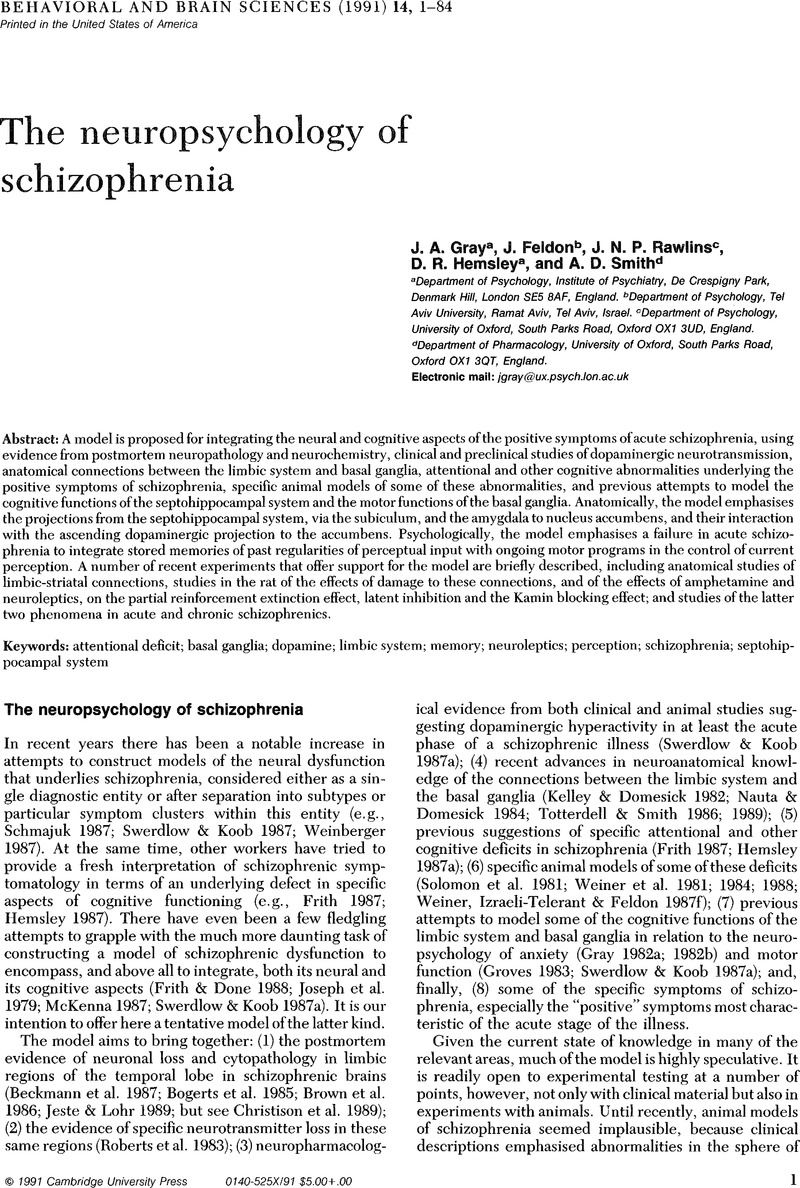Crossref Citations
This article has been cited by the following publications. This list is generated based on data provided by Crossref.
Pickering, Alan D.
1993.
Schizophrenia: In context or in the garbage can?.
Behavioral and Brain Sciences,
Vol. 16,
Issue. 1,
p.
205.
Smothergill, Daniel W.
and
Kraut, Alan G.
1993.
Toward the more direct study of attention in schizophrenia: Alertness decrement and encoding facilitation.
Behavioral and Brain Sciences,
Vol. 16,
Issue. 1,
p.
208.
Previc, Fred H.
1993.
A “neuropsychology of schizophrenia” without vision.
Behavioral and Brain Sciences,
Vol. 16,
Issue. 1,
p.
207.
Hemsley, D. R.
Rawlins, J. N. P.
Feldon, J.
Jones, S. H.
and
Gray, J. A.
1993.
The neuropsychology of schizophrenia: Act 3.
Behavioral and Brain Sciences,
Vol. 16,
Issue. 1,
p.
209.
Hemsley, David R.
1993.
A simple (or simplistic?) cognitive model for schizophrenia.
Behaviour Research and Therapy,
Vol. 31,
Issue. 7,
p.
633.
Joseph, Michael H.
1993.
The neuropsychology of schizophrenia: Beyond the dopamine hypothesis to behavioural function.
Behavioral and Brain Sciences,
Vol. 16,
Issue. 1,
p.
203.
Hemsley, David R.
1996.
Schizophrenia.
Behavior Modification,
Vol. 20,
Issue. 2,
p.
139.
1997.
Correlation between reduced in vivo benzodiazepine receptor binding and severity of psychotic symptoms in schizophrenia [published erratum appears in Am J Psychiatry 1997 May;154(5):722].
American Journal of Psychiatry,
Vol. 154,
Issue. 1,
p.
56.
Schmajuk, Nestor A.
2001.
Hippocampal dysfunction in schizophrenia.
Hippocampus,
Vol. 11,
Issue. 5,
p.
599.
Schmajuk, Nestor A
Cox, Landon
and
Gray, Jeffrey A
2001.
Nucleus accumbens, entorhinal cortex and latent inhibition: A neural network model.
Behavioural Brain Research,
Vol. 118,
Issue. 2,
p.
123.
Escobar, Martha
Oberling, Philippe
and
Miller, Ralph R
2002.
Associative deficit accounts of disrupted latent inhibition and blocking in schizophrenia.
Neuroscience & Biobehavioral Reviews,
Vol. 26,
Issue. 2,
p.
203.
Hemsley, David R
2004.
Disorders of perception and cognition in schizophrenia.
European Review of Applied Psychology,
Vol. 54,
Issue. 2,
p.
109.



